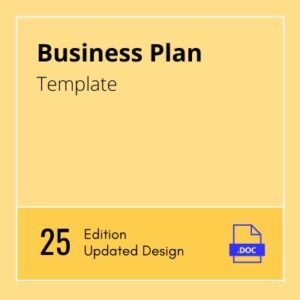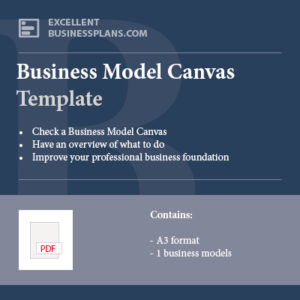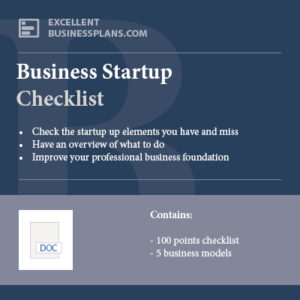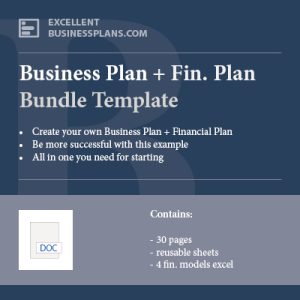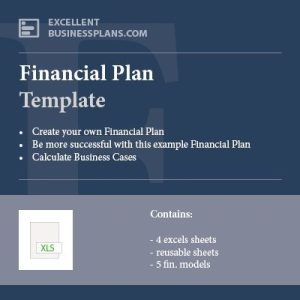Everybody plans before doing something big. don’t you think so? So, why not consider a business plan? Just like on a road trip, a map is needed. Likewise, every start-up business or a full fledged running business needs a direction. This way you don’t have to sit back and let the waves rock your boat.
We will discuss some key elements to pay attention to that we might miss when we are in planning mode no matter what stage your business is at. Find here the key elements of a business plan to consider when creating a business plan.
Also you can use this business plan and financial plan template to start writing your business plan
1. Executive Summary
The executive summary of your business plan should always be the last topic written in your plan, and it appears at the beginning of the paper. As the word summary implies, it should cover everything important to the one who is reading it; be they a lender, investor or financier.
An executive summary is mainly highlighting the points that need to be discussed or known in order to make the favorable decision the reader is being asked to make.
A compellingly good summary is a summary that reveals the mission statement of the company, with a brief discussion of its services and products. The WHY question can be answered in the summary for the start-up business or the relevant experience of the entrepreneur can be added.
2. Company Description
The next thing that interests the reader in the business plan is the introduction of your company. It should have complete information about what the company provides or will be providing, its products and services, its targets or goals and the audience, prospects and customers it serves already or plans to serve.
This description will also help the reader to find out why your business is different or differs from the competition that will help you cater the target audience.
3. Market Analysis
Your market analysis should be based on logical research or findings. Ideally, the market analysis shows if you know what are the trending ins and outs in that certain industry and the particular market you intend to enter.
In this section when you discuss the data and the statistics, make sure you have coloured graphs, spreadsheets, and histograms to demonstrate your insights and the future goals of where the company will be and where it stands in the market.
In addition, the details about the customers you will be marketing to need to also be shown, provided with the details of their income levels.
4. Competitive Analysis
To make your business plan a good one try to add as much clear and honest information you can in comparison with your direct and indirect competitors. Give the reader a clear picture to show how you can stack up against the competition, even when you know the strengths and weaknesses of the competitors.
In addition, if at any point you think there could be possibilities, for example, of high outspoken costs that may prevent you from leaping into the market then it is better you say so in your business plan but this information will be revealed when you complete the competitive market analysis.
5. Management Positions and Business Structure
Create a clear outline of factors that influence your corporate culture. Show the management positions, who reports to whom, who holds each position and the job descriptions.
Moreover, do not forget to mention how your business will operate legally. Will it be a partnership, a sole proprietorship or a different ownership business structure?
6. Products and Services Breakdown
Give an overview of what products and services your business provides, incorporate facts and extra information as available.
By this time, the reader should have a pretty decent knowledge of what you are planning to make and sell, the life of your products and their need.
Another good idea is to mention suppliers too. List the cost of production and how much financial backing you hope to secure and a list of related copyrights and patents can come in handy as well.
7. Marketing Plan
What is your main aim for this business plan? Outline your plan for marketing and promotions. You could use this marketing plan template. Describe how your audience will hear about, learn about and decide to take the next step to buy your product or service. Also outline the budget required for these strategies.
8. Sales Strategy
The most important question is to ask yourself: How will I sell my products? This answer is discussed with the sales strategy you plan. Be as precise as possible. Add numbers. How many agents will you hire? How? Add specific sales targets. Will you sell online, will you use sales reps?
9. Funding
If you are interested in getting funds devote an entire section to explain the amount of money you will need, and how you plan to put to use that capital. Even if there is need of extra money in the future in order to complete a particular project be explicit in explaining that as well. Here you can find a financial business plan.
10. Financial Projections
The last final section, you will reveal your financial goals and potentials based on the market research you completed. This section will have a report of your expected revenue for the coming year, also the annual anticipated earnings for the next five years.
Moreover, if there’s a need to apply for any loan, even a personal loan, you can add an additional section or an appendix that delivers additional fiscal information.
Good luck!
—
Download a business plan template
Download a financial plan template for your business


